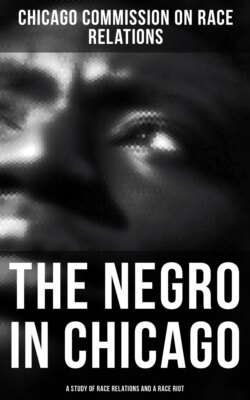Читать книгу The Negro in Chicago - A Study of Race Relations and a Race Riot - Chicago Commission on Race Relations - Страница 34
2. THE WEST SIDE
ОглавлениеA situation like that in the adjusted neighborhoods of the South Side exists in the district bounded by Washington and Kinzie, Ashland and California avenues, where there has been a settlement of Negroes for many years. Houses are cheaper than on the South Side, and although the general standard of workingmen's homes compares favorably with that on the South Side, few of the abandoned good residences formerly occupied by wealthy persons are available for Negroes. The densest and oldest settlement of Negroes is within the boundaries named, although the Negro residence area actually extends many blocks beyond them on all sides. There has been little friction, though the area has 9,221 whites and 6,520 Negroes. South of Washington Boulevard occasional difficulties have been met by the incoming Negro population, similar to those found in areas where the most congested Negro population on the South Side is spreading. On the West Side no bombings have occurred, although there have been frequent protests against the expansion. Some streets have come to be recognized as Negro streets.
In recent years many Negroes have bought homes on the West Side when they could not easily find living quarters in or near the older Negro residence areas on the South Side. Almost uniformly they keep their homes in good condition, which cannot be said of all the Negroes who settled early in this district. West Side Negroes, laborers for the most part, are generally home-loving, hard-working, and desirous of improving conditions for their children. Older settlers among them have been able to make their adjustments without great difficulty and with no marked antagonism from white neighbors.
Though occasionally trivial conflicts arise between Negro and white neighbors, the attitude of whites in nearby areas is customarily friendly if not cordial. For example, a Negro doctor has a considerable practice among nearby Italians in the vicinity of the Chicago Commons Social Settlement. At Chicago Commons itself no distinction is made with respect to the few Negro families which at times make use of the facilities. Children of these families have entered classes and clubs, and one of them became a leader of a group.
The Poles who mainly occupy the neighborhood around the Northwestern University Social Settlement are entirely friendly to Negroes. Three years ago an educated Negro was at the head of the boys' department of the settlement, and, with one exception, no one in that position has made more friends among the boys and their families.
On the West Side, as on the South and North sides, Negroes have established their own restaurants and barber shops and some groceries and delicatessen stores. There are several theaters whose patronage is largely Negro.
